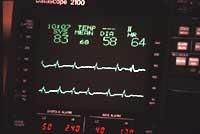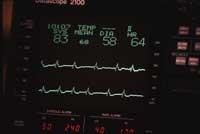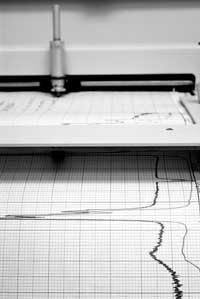Pocket electrocardiograph
2002/01/09 Galarraga Aiestaran, Ana - Elhuyar Zientzia
This tool is really useful and due to its small size can be carried in ambulances. This allows, for example, to make electrocardiogram at the infarction in situ.

Electrocardiographs collect signals from the heart's electrical activity and are used to detect heart crises, arrhythmias, and other heart problems. The newly approved pocket electrocardiograph is as small as a laptop. Each heart beat has twelve electrodes that detect the electrical current generated. The signals received in the patient's chest are returned by a cable to the upper part of the device. The doctor can read it on the PDA (Personal Digital Assistant) screen or if you use the ambulance staff can send the result to the hospital doctor. At the same time, it can be printed on the paper used by the traditional electrocardiograph.
They have not yet said how much it will cost, so some believe that there may be the spoon: if it is too expensive, it will not extend much. On the contrary, if it has an acceptable price, just as it now has portable coolers, they believe that one day it can be carried by the American police. In this way, the heart attack will receive immediate attention.

Gai honi buruzko eduki gehiago
Elhuyarrek garatutako teknologia





